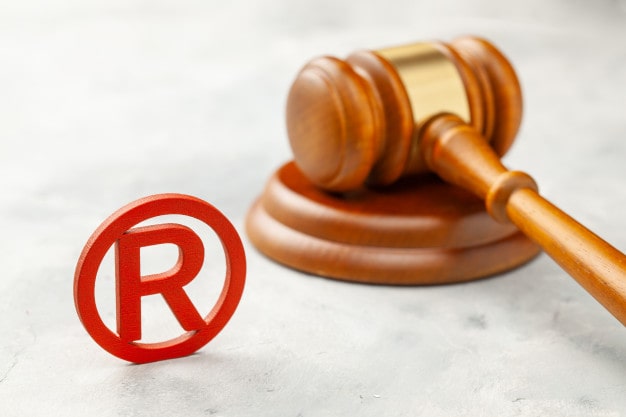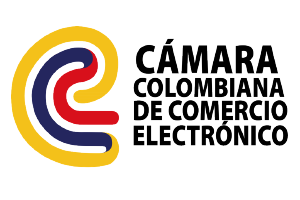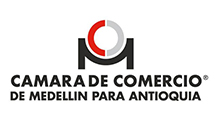Trademark registration for Latin America
What does trademark registration consist of?
Trademark registration consists of a process through which a businessman is granted the exclusive right over a sign that serves to distinguish products or services in the market.
It is therefore an optional process of each businessman who has an interest in protecting his trademark as the main asset of his company, since the state grants the exclusivity or monopoly of a sign to a businessman through the registration of a trademark.
This type of trademark registration consists of: words, images, figures, symbols, graphics, logos, monograms, portraits, labels or other signs that serve to identify products or services. By law, identical or similar trademarks should not exist to cover identical or related goods or services, since this would create a risk of confusion in the market.
Is it possible to register for all of Latin America or must it be done country by country?
It is not possible to register for all of Latin America. Within the framework of the Andean Pact, in order to obtain protection through the registration of a trademark in the Andean Community, an individual application for registration is required in each of the countries that make up the Andean Community.
However, through the Madrid Protocol, it is possible to make a single application for registration of an international trademark that has the same effects as an application for registration of a trademark made in each of the countries designated by the applicant. The Latin American countries that are part of the Madrid Protocol are the following: Brazil, Colombia, Cuba, Mexico.
Are there any agreements, treaties or systems in common for Latin American countries?
The Madrid Protocol is one of the treaties comprising the Madrid System for the International Registration of Marks.
This protocol gives trademark holders the opportunity to protect their trademarks in several countries by filing a single application directly with the national trademark office (in the Colombian case Superintendencia de Industria y Comercio), in a single language (Spanish), with a series of pre-established fees in a single currency and no need for a local agent in the countries designated for the application.
Likewise, the Madrid Protocol facilitates the management subsequent to the registration of the trademark, since with only one procedure it is possible to register changes of owner or name, of the owner’s address, the renewal of the trademark in each of the designated countries or the subsequent designation of other countries.
Is the trademark registration done through the SIC?
From Colombia, the process of registering an international trademark is carried out through the Superintendence of Industry and Commerce in the case of Latin American countries that are part of the Madrid Protocol. In the case of Latin American countries that are not part of the Protocol, it is carried out in each country at its respective national office.
Trademark registration requirements for Latin America
| For countries that are members of the Madrid Protocol | For Latin American countries that are not party to the Madrid Protocol
|
| 1. A single application based on your country of origin and designate the countries or territories in which you wish to obtain protection. 2. The rules of presentation are unified. 3. They are presented in a single language. In Colombia it can be presented in Spanish. 4. A single form. 5. It is not necessary to appoint a legal representative in each country that has been designated.
| 1. A different application in each country. 2. Submit to the rules of each national office. 3. Translation of documents into the language of each country. 4. A different form in each country. 5. To have a representative or proxy from the beginning.
|
Trademark registration costs (payment methods, currency)
In the case of Latin American countries that are not part of the Madrid Protocol, each office establishes the payment of fees, usually in its own currency. Some offices offer a convenient method for payment of fees, while in others, the procedures for making payments in local currency can be complicated and costly.
However, in the case of Latin American countries that are members of the Madrid Protocol, fees are paid to the International Bureau in a single currency (Swiss francs) and can be paid by a variety of convenient methods, including payment by credit card. From Colombia: the applicant of an international trademark registration must pay to the SIC a fee for the transmission of the application, established in resolution No. 47754 of 2012[1]: COP $52,600. The rates assigned by the International Bureau for Colombia are as follows:


Duration of the procedure
The duration of the trademark registration process is 8 to 10 months.


Duration of the trademark registration term for Latin America
The protection of an international trademark registration lasts for 10 years from the date of registration and may be renewed for additional 10-year periods upon payment of the renewal fee established by the International Bureau.
Step by step and stages of the procedure. Is it a single process for all Latin American countries or a separate process for each country?
It is a single procedure for Latin American countries that are part of the Madrid Protocol, while in the case of Latin American countries that are not part of the Protocol, it is a different procedure for each country.
In the case of Latin American countries that are part of the Madrid Protocol, the procedure is as follows:
- First, the applicant must have a trademark registration or a trademark application in its office of origin which, in the Colombian case, will be the Superintendence of Industry and Commerce. This record is hereinafter referred to as the “Base Record” and the application is also referred to as the “Base Application”.
- The international application is then filed with the Office of origin, which is responsible for verifying that the international application corresponds to the basic registration or basic application and for sending the application to the International Bureau.
- In the third instance, the International Bureau carries out the formal examination of the application, the publication and is responsible for notifying the countries designated by the applicant of the request for extension of the registration to them so that they may initiate the trademark registration process.
- Subsequently, the office responsible for the registration of marks in each of the countries or the designated intergovernmental organizations carries out its own examination of registrability and must notify the International Bureau of any objections to the extension of registration in that Contracting Party. Objections are referred to as denial of protection. If the office does not notify the International Bureau of the refusal of protection within the prescribed time limit (see provisional refusal), the application will be automatically registered in that country, with the same effects as if the application had been filed directly with that office. The WIPO Gazette is published electronically and is available on the WIPO website at:http://www.wipo.int/madrid/es/madridgazette/index.html.
[2]
- Renewal of registration and other post-registration procedures.
How is the trademark background check for Latin America performed?
Once you have the correct classification of the trademark you wish to register, you must access the SIPI, which is the official system of the SIC to register and manage trademarks. The address for this tool is: http://sipi.sic.gov.co.
- Once in SIPI, you must create an account with your username and password.
- To perform a background search of your trademark, you must go to the Trademark tab and select the Search Trademarks option.
- Then select the Advanced Search option.
- In the Keyword box, enter the mark of your interest and in the Class(es) of goods and/or services box, the class of goods or services you intend to identify with it.
- If the trademark you are interested in is not registered in the search result, check additionally if there are similar signs to it.
- If the trademark you wish to use is already registered, try again with other possibilities until you find an available option.
- Finally, observe the expiration date of the trademark that constitutes an obstacle against the sign of your interest, because when a trademark expires its owner will have lost any exclusivity right over it[3].
By what means is the procedure carried out from Colombia?
For Latin American countries that are part of the Madrid Protocol, the application for registration of an international trademark must be made using the official MM2 form provided by the International Bureau of the World Intellectual Property Organization (WIPO) on its web site: http://www.wipo.int/madrid/es/forms/. It can be done virtually. For more information, please follow the Instructions
[4]
to fill out the forms provided in each form.
In the case of Latin American countries that are not part of the Madrid Protocol, the procedure must be carried out according to the rules of each country, in their respective national office.
Which countries does it cover?
The Latin American countries that are part of the Madrid Protocol are the following: Brazil, Colombia, Cuba, Mexico. An updated list of contracting countries is available on the Internet at the World Intellectual Property Organization (WIPO) website: http://www.wipo.int/madrid/es/members.
Cybergraphy
[1] Resolution 47754 of 2012. taken from: http://www.suin-juriscol.gov.co/viewdocument.asp?Ruta=Resolucion/4040696
[2] Article: How to register in other countries? Retrieved from: https://www.sic.gov.co/propiedad-industrial/como-registrar-en-otros-paises
[3] Article: Manual for registering a trademark before the Superintendence of Industry and Commerce (sic) through the SIPI. Luis Fernando Patrón Fuentes.
[4] Instructions for filling out and printing the Madrid forms in pdf format: https://www.wipo.int/madrid/es/forms/instructions.html



